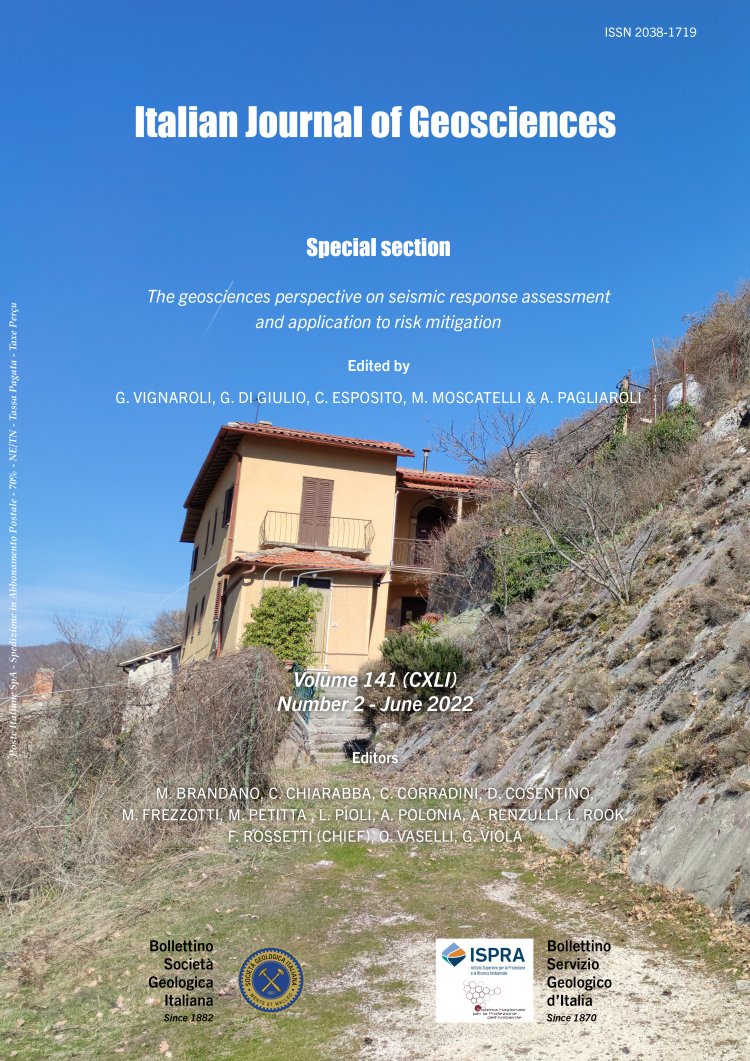
Mapping urban limit conditions in the perspective of disaster risk prevention and land management
Angelo Anelli1, Federico Mori1, Amerigo Mendicelli1 & Fabrizio Bramerini2
1Italian National Research Council – IGAG, Montelibretti (Rome), 00010, Italy.
2Dep. of Civil Protection, Via Vitorchiano 2, Rome, 00189, Italy.
Corresponding author e-mail: angelo.anelli@igag.cnr.it
Volume: 141 (2022) f.2
Pages: 167-183
Abstract
The destructive effects of earthquakes on the built environment have highlighted the structural fragilities of cities, especially in their old historic centres. In Italy, such effects have caused high social and economic losses, as well as the complete or partial loss of functionality of cities in the medium and long term and, in the worst cases, their total abandonment. In order to prevent and avoid these dramatic situations and outline policies for enhancing resilience and preparedness within communities, policy makers need predictive tools and models able to estimate damage scenarios, economic losses, deaths, injuries, homeless, as well as the corresponding beneficial impacts of retrofit interventions at the urban, regional and national scale. This paper presents a framework to map urban limit conditions for different earthquake scenarios and performance goals according to the expected percentage of residents in usable buildings as a proxy to measure resilience. The results are aggregated by municipality and by territorial context based on the population in usable and unusable residential buildings in the short and long time span due to their structural damages, which are evaluated by means of probabilistic risk assessments and census data. The proposed framework is applied to all municipalities in five regions of southern Italy and the results are discussed to understand the consequences of housing functionality losses from a resilience perspective understood as the capacity of an urban system to respond to seismic events and recover from them.
Keywords
Residential buildings, Earthquake, Risk analysis, Resilience, Limit conditions, GIS mapping, Risk mitigation policies, Emergency planning.
Get Full Text